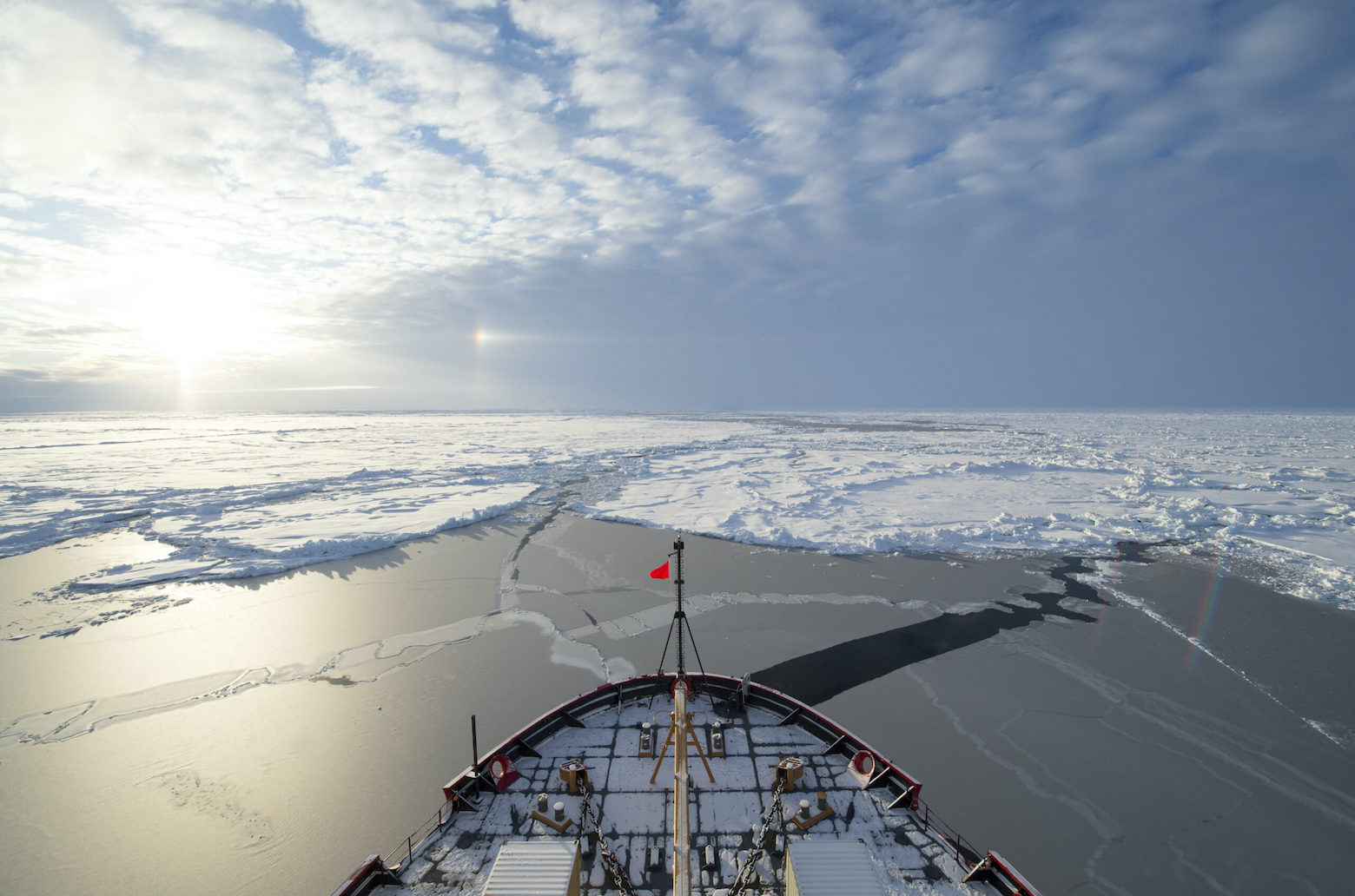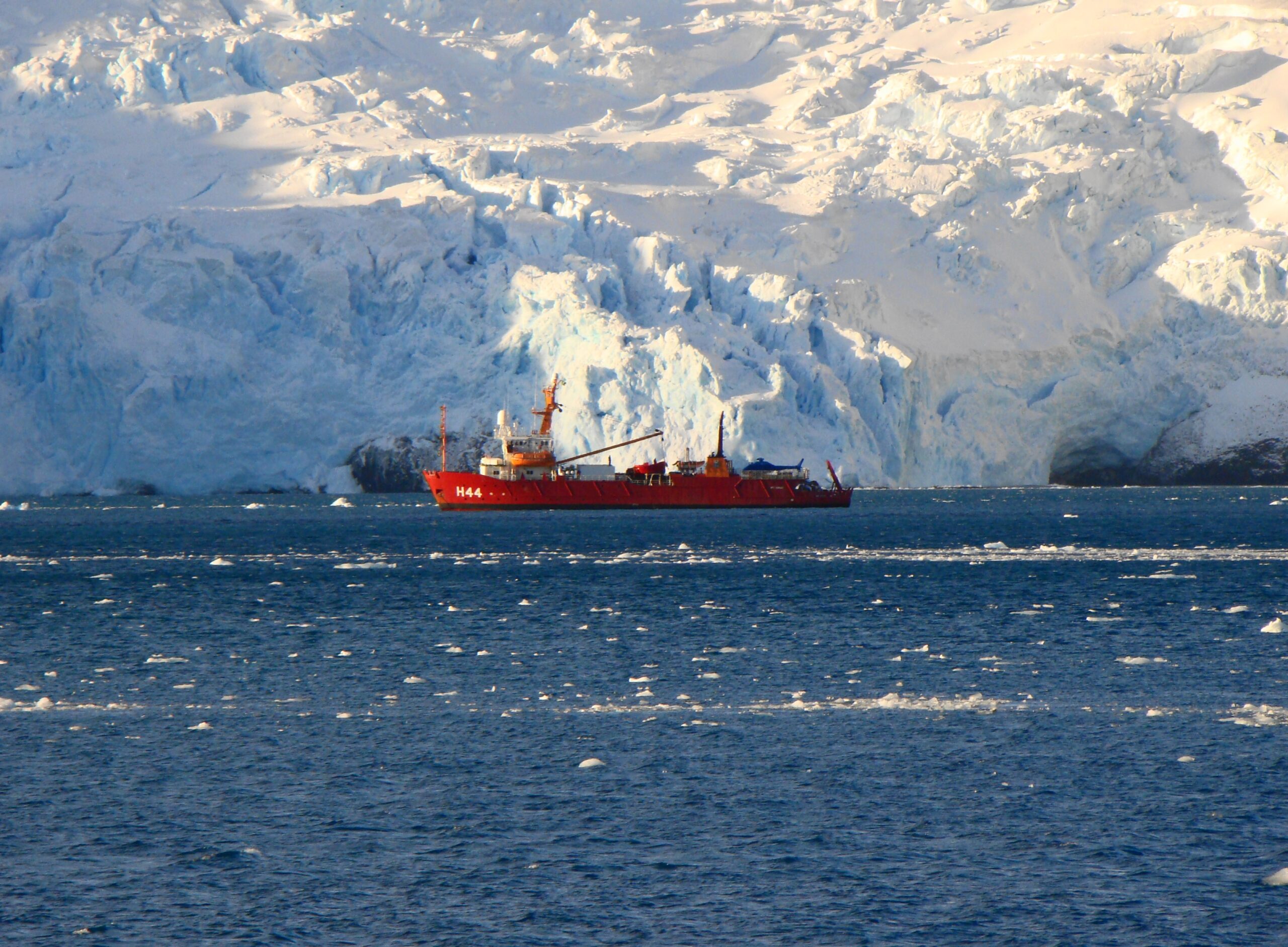What Is E-Navigation and Why Is It Important in the Arctic?
Using high-tech communications and navigations tools to promote safety and environmental protection in the Arctic

Ocean Conservancy teamed up with the Marine Exchange of Alaska to produce a short report describing how advances in navigation and communications technologies can help enhance shipping safety and environmental protection in the U.S. Arctic. You can read the new report here, or you can read on for a quick overview!
Maritime navigation is nothing new.
Ocean-going vessels have always needed information about their position and their surroundings in order to navigate safely. Over the years, mariners have used increasingly sophisticated tools to do the job. From navigating using currents and stars, navigators moved on to adopt the use of sextants, navigational markers and chronometers. The 20th century saw the widespread use of radio and radar, followed more recently by the advent of automatic identification systems (AIS), satellite-based global positioning systems (GPS) and electronic charting. These modern innovations have ushered in an age of e-navigation, or “e-NAV” for short.
What is e-NAV?
The International Maritime Organization (IMO) defines e-NAV as “the harmonized collection, integration, exchange, presentation and analysis of marine information onboard and ashore by electronic means to enhance berth to berth navigation and related services for safety and security at sea and protection of the marine environment.” In layman’s terms, e-NAV means using different kinds of electronic navigational technologies to enhance maritime safety and to protect our ocean and coasts.
Among other technologies, e-NAV can include: 
- GPS: a satellite-based navigation system that enables receivers to obtain information about their location with a high-degree of accuracy.
- AIS: a vessel tracking system that uses Very High Frequency (VHF) radio, global positioning and vessel-based transceivers to broadcast a ship’s identity, position, course, speed and other information.
- Electronic Charting Information and Display System (ECIDS): a shipboard information system that displays and integrates information from electronic charts, GPS, AIS, and other navigational sensors, as well as information about routing, weather and environmental conditions and other data.
- Virtual and Synthetic Aids to Navigation (ATONS): “virtual buoys” that appear on a ship’s ECIDS without requiring placement and maintenance of an in-water buoy.
Why is e-NAV important in the Arctic?
Arctic waters are remote, experiencing extreme weather and environmental conditions. Many Arctic waters are covered in sea ice for months at a time during the winter and spring. These challenges often preclude the use of traditional aids to navigation and maritime management tools. However, e-NAV technologies can overcome these Arctic challenges by providing mariners with relevant, up-to-date navigational, safety and environmental information in real time. In U.S. Arctic waters, real-time data could include information about weather, safety hazards, dynamic marine protected areas (presence of marine mammals), and regional maritime activity such as Indigenous whaling.
Are there examples of e-NAV in the Arctic?
E-NAV is still evolving in the Arctic, but has already proven successful in several applications. For instance:
- Arctic Next Generation Navigational Safety Information System: The U.S. Coast Guard entered a Cooperative Research and Development Agreement (CRADA) with the Marine Exchange of Alaska from 2014–2018. Under the agreement, the Marine Exchange successfully used its AIS transmitters to send key information to vessels, including safety and environmental information as well as the location of “virtual buoys” when the use of physical buoys was not practicable.
- Automated Watchdogs: the Marine Exchange of Alaska developed a system that uses e-NAV technologies to generate automatic alerts when a vessel using AIS engages in particular behaviors. For instance, an automatic alert could be generated when a vessel exceeds a designated speed limit, enters a restricted area or shows evidence of loss of propulsion. Such events automatically send alerts to Marine Exchange’s watch center, which can evaluate the situation and take appropriate action.
- Vessel Tracking for Remote Communities: Wildlife Conservation Society and Marine Exchange of Alaska collaborated to develop a smartphone app that allows Indigenous maritime hunters to freely access real-time vessel traffic data near their communities for AIS-equipped vessels in the region. Such access allows for trip planning and information to contact specific vessels, even when they are not visible from a community due to fog or other reasons.
What are the current barriers to more extensive use of e-NAV?
E-NAV shows great promise, especially for remote Arctic waters, where traditional navigational aids are few and far between. To take full advantage of the promise of e-NAV in the Arctic:
- IMO should amend the Polar Code to require vessels operating in Arctic waters to be equipped with the latest AIS and ECDIS technologies to ensure they can receive navigational safety, navigation and environmental information transmitted by coastal states.
- Coastal states should ensure communications systems are capable of transmitting relevant and accurate safety and environmental information to vessels transiting their Arctic waters.
- The U.S. should invest in the implementation of e-NAV capabilities by funding the installation and operation of AIS ATONS in the Arctic and employing emerging e-NAV capabilities as they are developed.

As more vessels operate in Arctic waters, we must do all we can to ensure they operate safely and minimize their impacts to the marine environment and the people who live in the region. E-NAV technologies offer great promise.
To learn more about e-NAV, you can read the full report here. Ready to take action?
Tell the IMO to strengthen e-NAV requirements for vessels that travel in Arctic waters.